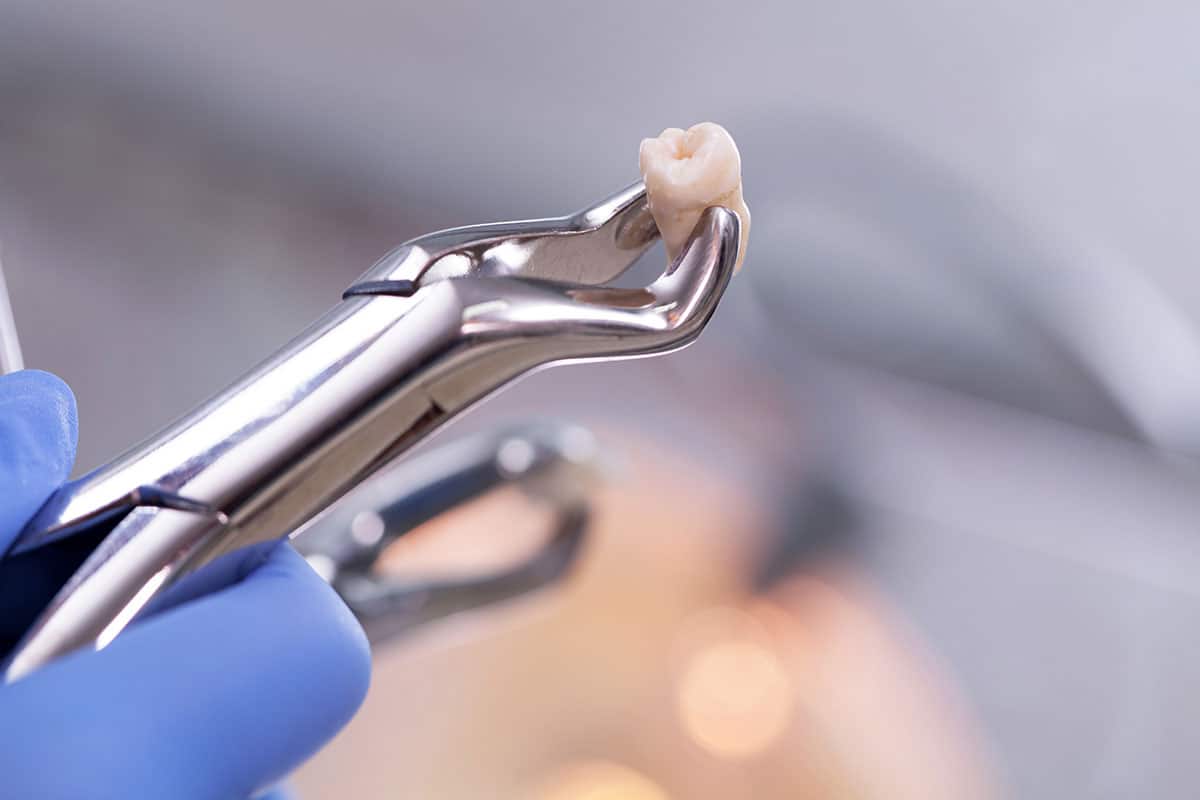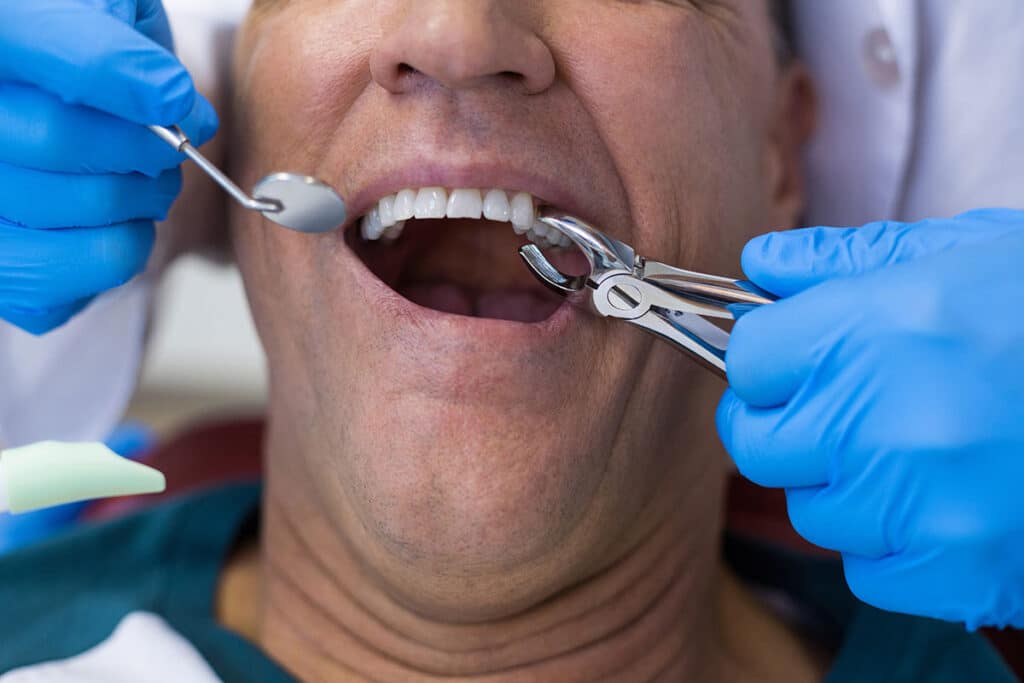Tooth extractions, or the removal of one or more teeth, are usually used as a last resort in dentistry, as keeping the natural tooth in the mouth is ideal. There are many reasons why single or multiple extractions may be performed, including pervasive tooth decay, the impaction of wisdom teeth, or the need to create space for orthodontic devices.


The most significant short-term benefit associated with tooth extraction is the elimination of pain. If a tooth is severely decayed or an infection is present, removing the affected tooth almost immediately alleviates discomfort. However, it should be noted that further procedures are necessary to replace the extracted tooth. Leaving a gap is not a viable option as the other teeth tend to twist out of alignment to fill the space.

Tooth extractions are incredibly common procedures. It should be reiterated that an extraction is used as a procedure of last resort, when nothing more can be done to save the tooth.
Here is a brief overview of some of the main reasons for tooth extraction:
Generally, tooth extraction can be simple in nature or involve more complex surgical processes. Simple extractions are performed on fully emerged teeth after applying local anesthetic to the treatment site. Instruments are used to elevate the tooth and then sever the periodontal ligament. The tooth is then carefully removed with dental forceps.
Surgical extractions are performed on teeth that are either invisible or inaccessible, like un-erupted wisdom teeth. An incision is usually made in the gum tissue and a drill is used to precisely remove some of the adjacent bone tissue. Sometimes, the tooth has to be split into several pieces to completely remove it.
If you have any questions or concerns about tooth extraction, please contact your oral health care provider.
At our office, we offer bone grafting along with tooth extraction as the standard of care. Bone grafting is not required along with each extraction, but if a patient is considering having the tooth replaced at some point in the future, we highly recommend this procedure. In the majority of cases, the success of a restoration procedure such as dental implants, can depend on the height, depth, and width of the jawbone at the implant site. When the jawbone has receded or sustained significant damage, the implant(s) cannot be supported on this unstable foundation and bone grafting is usually recommended for the ensuing restoration.
There are several major factors that affect jaw bone volume:
Bone grafting is a highly successful procedure in most cases. It is also a preferable alternative to having missing teeth, diseased teeth, or tooth deformities. Bone grafting can increase the height or width of the jawbone and fill in voids and defects in the bone.
There are essentially two basic ways in which bone grafting can positively impact the health and stability of the teeth:
Jaw Stabilization – Bone grafting stabilizes and helps restore the jaw foundation for restorative or implant surgery. Deformities can also be corrected and the restructuring of the bone can provide added support.
Preservation – Bone grafting can be used to limit or prevent bone recession following a tooth extraction, periodontal disease, or other invasive processes.
Oral Examination
Initially, the dentist will thoroughly examine the affected area in order to assess the general condition of the teeth and gums. If periodontal disease is present or the adjacent teeth are in poor condition, these factors will be fully addressed before the bone grafting procedure can begin. The dentist will also recommend panoramic x-rays in order to assess the precise depth and width of the existing bone. On occasion, a CAT scan may be recommended to determine the bone condition. Depending on these results, the dentist may also anesthetize the area and explore into the gum in order to determine what kind and how much bone is required.
There are several types of bone grafts. Your dentist will determine the best type for your particular condition.
Autogenous Bone Graft – Harvested from the patient’s own body (usually from the posterior part of the lower jaw or the chin). This method is usually preferred because it produces the most predictable results.
Allograft Bone Graft – Cadaver or synthetic bone is used in this type of graft.
Xenograft – Cow bone is used in this type of graft.
The bone grafting procedure can often take several months to complete. Bone is typically harvested from your own body (or on rare occasions obtained from a “bone bank”) and added to the affected site. This bone will fuse with the existing bone and the migration of cells will cause firm adhesion and cell growth. Supplementing the jaw with bone will result in greater bone mass to help support and anchor the implant(s).
During the surgery, the dentist will numb the grafting and extraction sites using local anesthetic. A small incision will be made to prepare the site for the new bone and it will be anchored into place. On occasion, a synthetic membrane may be used to cover the new bone. This membrane prevents soft tissue and bacterial invasions, and encourages new bone growth. The surgery does not require an overnight stay, and you will be provided with comprehensive instructions for your post-operative care. The dentist will prescribe medications to help manage infection, discomfort and swelling.
